What were the last paintings of great artists
Categories: Culture
By Pictolic https://pictolic.com/article/what-were-the-last-paintings-of-great-artists.htmlHave you ever wondered which painting was the last in the life of a famous artist? So, there is no need to guess, because we have collected for you a gallery of the latest masterpieces of the most famous artists, from Picasso to Matisse, from Caravaggio to Raphael.

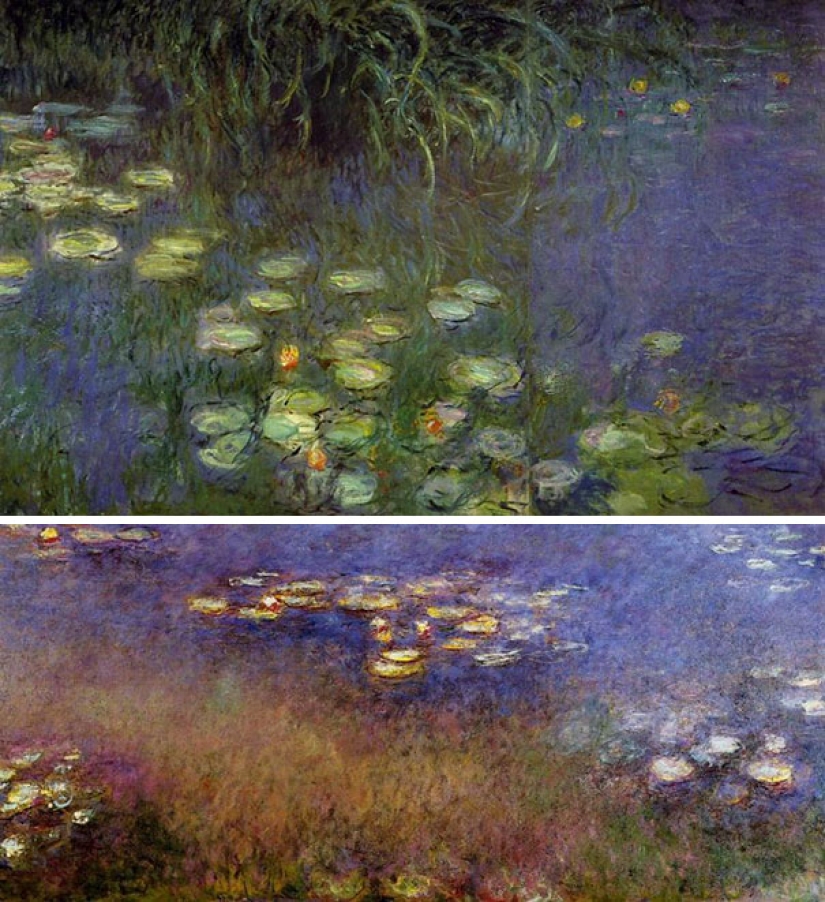
Claude Monet - the scenery of "Water Lilies" (1926)
"The Great Scenery" (1920-1926) is a collection of frescoes that became the last works of Claude Monet. They depict his favorite water lilies. He drew them when he had almost lost his sight. As the artist's eyesight deteriorated due to cataracts, in his works fresh and bright colors were replaced by blurred saturated browns and reds. In letters to friends, he wrote how colors fade and how difficult it is for him to distinguish them, and therefore he had to sign tubes of paint. Monet wanted to be buried as a simple man after his death: "First of all, remember that I don't want flowers or wreaths. These are empty honors. It would be blasphemy to pick flowers in my garden for such an occasion."
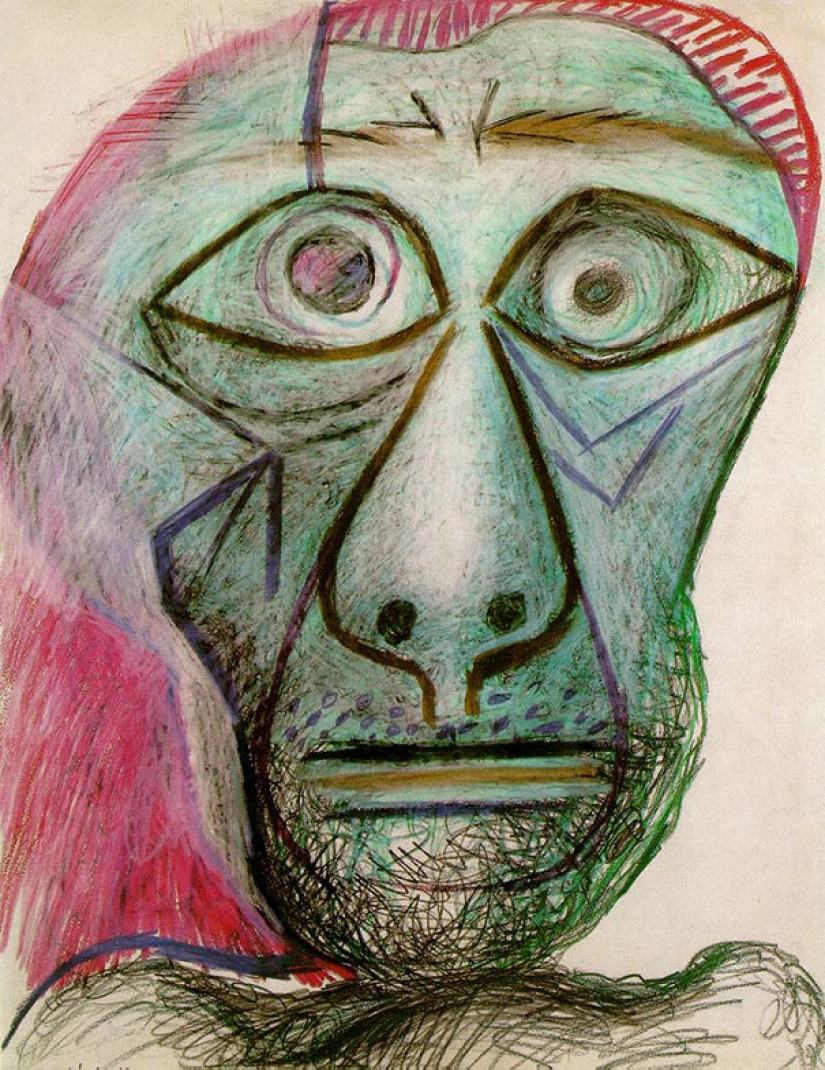
Pablo Picasso - the Last Self-portrait (1972)
Picasso's last known self-portrait is aptly called "Face to Death". He drew it with colored crayons on paper in 1972, less than a year before his death. Picasso worked until his death at the age of 91. He painted until three o'clock in the morning on Sunday, April 8 and finished only a few hours before leaving for the other world.
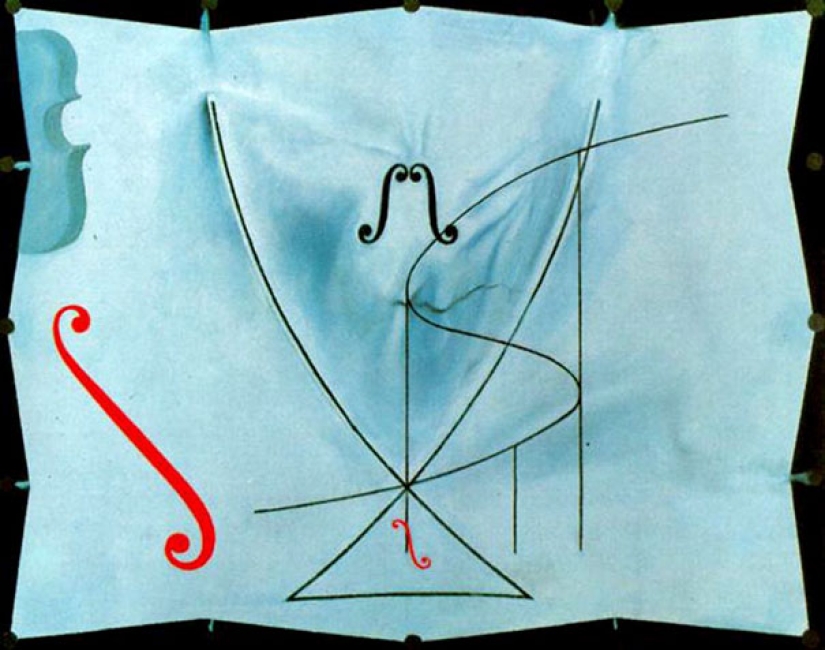
Salvador Dali - "Dovetail" (1983)
Salvador Dali completed his last painting in the spring of 1983. The work is called "Dovetail", and this is the last work in a series based on the theory of catastrophes developed by the French mathematician Rene Thom in the 1960s. Catastrophe theory is a branch of mathematics that studies how small changes in circumstances can lead to sudden shifts in events. The picture was Dali's attempt to display his understanding of this mathematical theory. Salvador Dali died in 1989 at the age of 84.
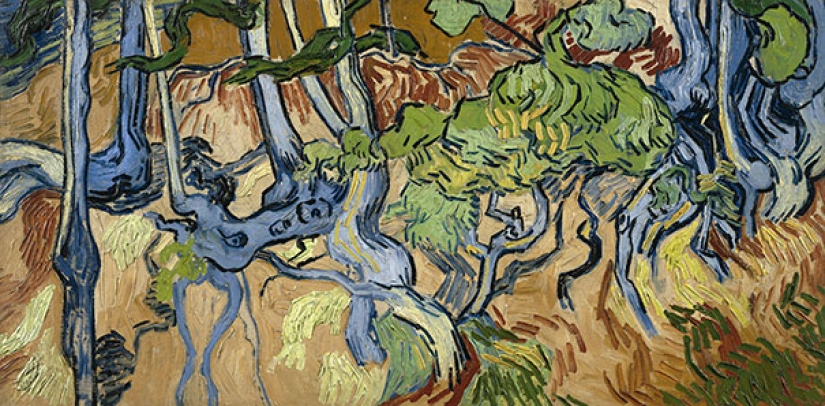
Vincent Van Gogh - "Roots of Trees" (1890)
"Wheat field with crows" (1890) is often called the last work of Vincent Van Gogh. Perhaps because this landscape actually became the place where the artist met his death by committing suicide. Nevertheless, it is more likely that his last painting was "Roots of Trees", painted in Auvers-sur-oIse a little after Van Gogh left the hospital in Saint-Remy.

Gustav Klimt — "The Bride" (1918)
Gustav Klimt never finished his last painting titled "The Bride" (1917-1918), but his unfinished work gives us an amazing opportunity to look inside at the artist's technique and his hidden desires. The painting depicts naked women, because Klimt died before he had time to draw clothes for them. This indicates a fixation on the topic of sex, which is hidden under the surface of the artist's other paintings.

Frida Kahlo — "Long live life! (Watermelons)" (1954)
Viva la vida (Viva la vida) is the latest work by Mexican artist Frida Kahlo. She completed it eight days before she died on July 13, 1954 at the age of 47. The painting is a still life with watermelons, a popular symbol of the Day of the Dead, which is celebrated in Mexico. Watermelons are often found in the works of other Mexican artists.

Edouard Manet — "The Bar at the Folies Bergere" (1882)
Edouard Manet (1832-1883) was a French artist who became the first in the XIX century to paint modernity, as well as a central figure in the transition of realism to impressionism. His last painting was "The Bar at the Folies Bergere", completed in 1882, a year before he died of gangrene after amputation of the foot. The painting originally belonged to the composer Emmanuel Chabrier, Manet's neighbor, who hung it over his piano.
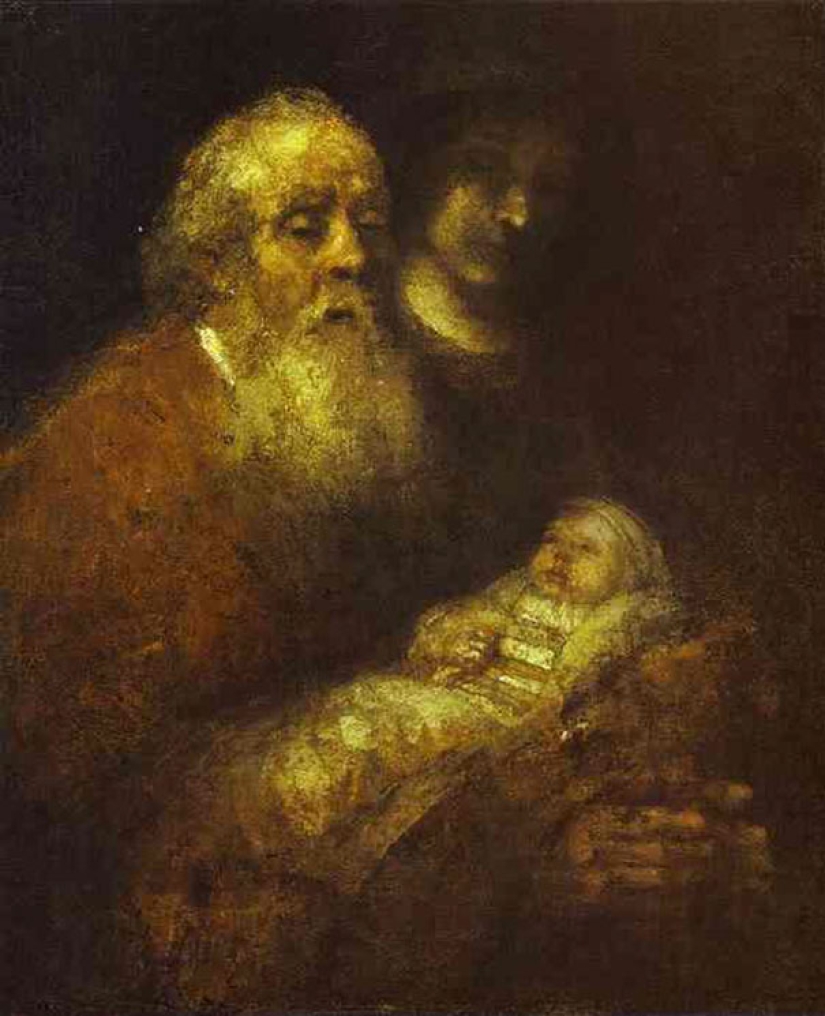
Rembrandt - "Simeon in the Temple" (unfinished) (1669)
This painting by Rembrandt van Rijn (1606-1669) was found unfinished in his studio before the artist's sudden death at the age of 63. It is now on display at the National Museum in Stockholm. The painting depicts an elderly man holding a child in his arms. The artist has previously addressed this subject twice. The work illustrates a fragment of the psalm of the Gospel of Luke, in which Mary and Joseph bring the baby Jesus to the temple in Jerusalem. The character in the background was probably finished by someone else later. Some believe that this is Mary, although others claim that this is Anna the Prophetess.
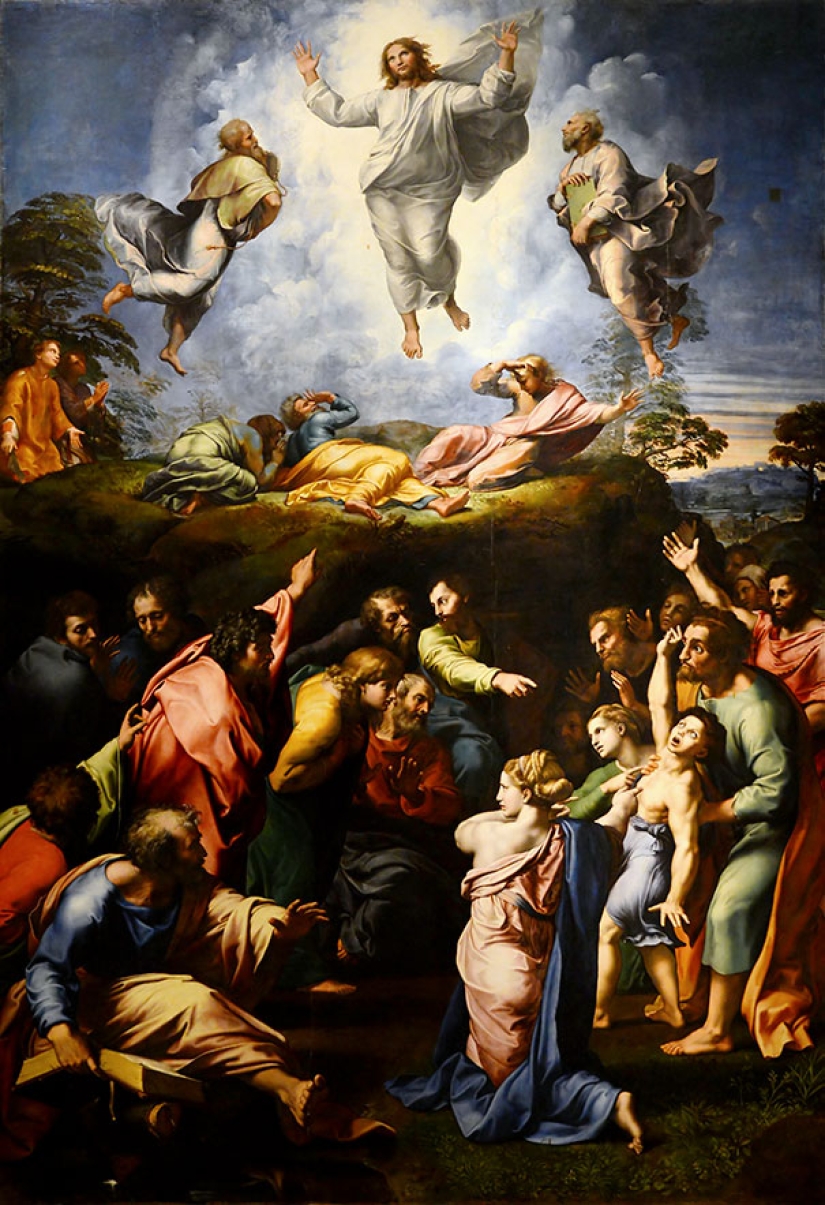
Raphael - "Transfiguration" (1520)
Raffaello Sanzo da Urbino (1483-1520), known as Raphael, was an Italian painter and architect of the High Renaissance. Together with Michelangelo and Leonardo da Vinci, he is one of the trinity of the great masters of that time. His last painting was The Transfiguration (1520). It was commissioned by Cardinal Giuliano de' Medici, who later became Pope Clement VII (1523-1534). Now this work is on display in the Vatican Pinacoteca.
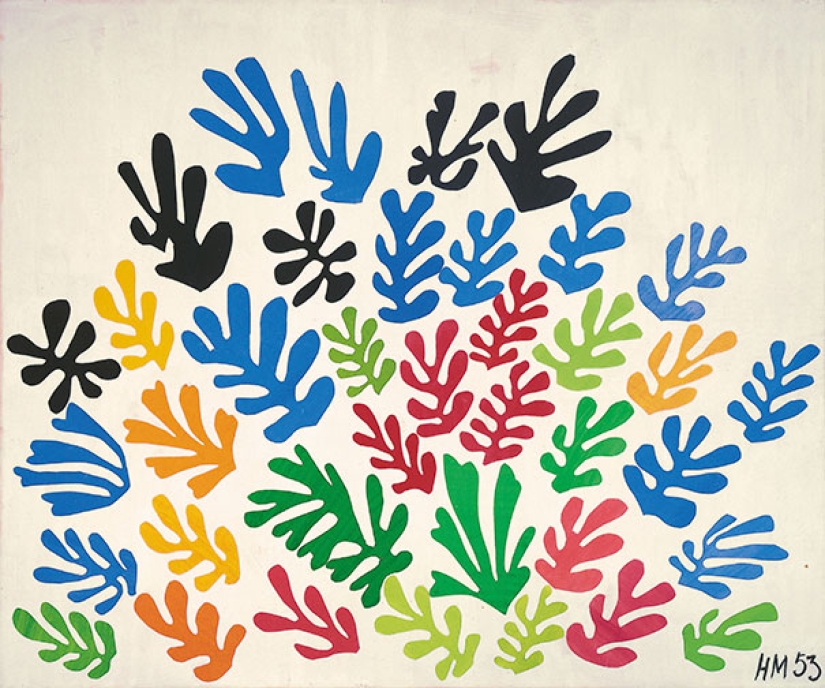
Henri Matisse - "Sheaf" (one of the last works) (1953)
Henri Matisse (1869-1954) was an iconic and very influential French artist of the first half of the 20th century, best known for the expressive colors and forms of the direction in painting called "Fauvism". His last work was "Sheaf" (1953), a fragment of ceramic tile inserted into plaster. This work is now on display at the Los Angeles County Museum of Art (LACMA).
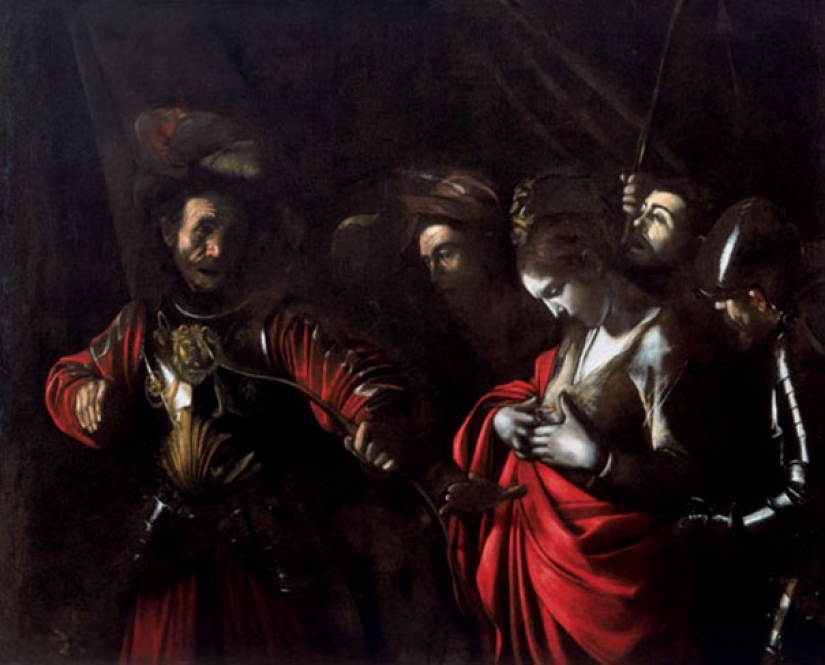
Caravaggio - "The Martyrdom of Saint Ursula" (1610)
Michelangelo Merisi da Caravaggio (1571-1610) was an Italian artist whose work is characterized by the spectacular use of the play of light and shadow. During his studies, he was influenced by Baroque painting. His last painting is considered to be "The Martyrdom of St. Ursula". It is now part of the Intesa Sanpaolo collection of the Zevallos Stillano Palace Gallery in Naples. Caravaggio died in 1610, having gone to the pope for forgiveness because of his involvement in the death of a young man in a duel four years earlier. The circumstances of his death are unclear, but it is believed that he died of a fever.
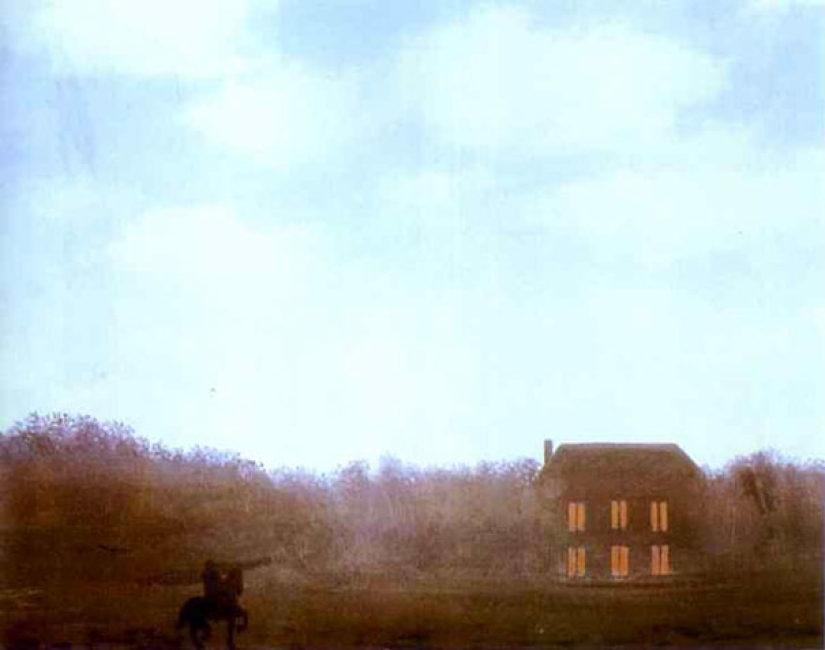
Rene Magritte - "Empire of Light" (unfinished) (1967)
Rene Francois Ghislain Magritte is a Belgian surrealist painter. He is best known for his witty and thought-provoking paintings. The artist continued to work until his death in 1967. His latest, unfinished work is called "Empire of Light". The painting was commissioned by a German collector from Cologne, but never received it, because it remained on an easel in the artist's house in Brussels until the death of his wife Georgette in 1986.
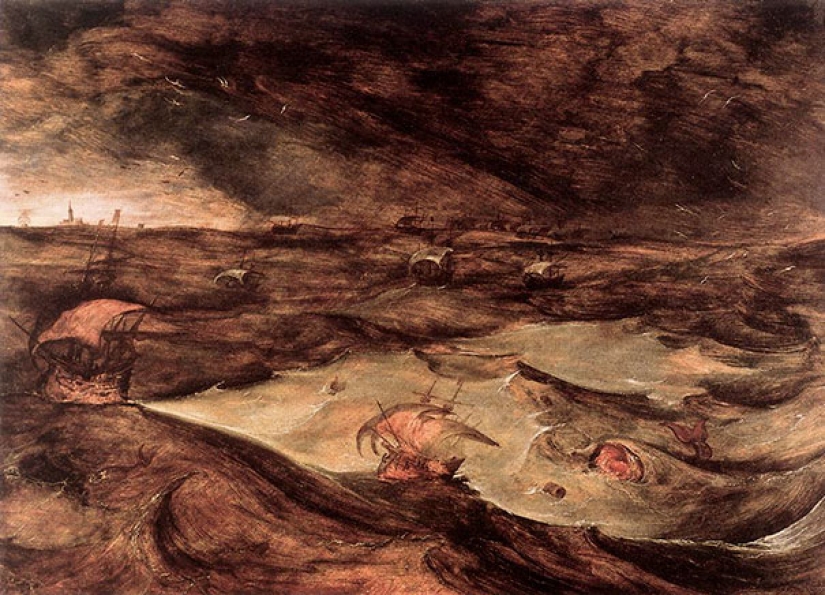
Pieter Brueghel the Elder — "The Tempest" (1569)
Pieter Brueghel the Elder (1525-1569) was a Dutch Renaissance painter known for rural scenes and landscapes. His latest work "The Tempest" is an unfinished oil painting on wood, which depicts ships on high storm waves. It is now on display at the Kunsthistorisches Museum in Vienna.

Andy Warhol — The Last Supper (1986)
Andy Warhol (1928-1987) was an American artist and an iconic figure of the visual art movement that became known as pop art. His works explore the relationship between the cult of celebrities, creative expression and advertising. His last series of paintings entitled "The Last Supper" was created at the end of 1986. It is now on display at the Guggenheim Museum in New York. The series was commissioned, and the idea was invented by the late Parisian gallerist Alexander Iolas, who agreed that the work would be paid for by the Milan-based Credito-Valtellinese bank. The paintings were hung in the new office of the bank, directly opposite the church of Santa Maria delle Grazie, where the noble original by Leonardo da Vinci hangs. Warhol often used commercial reproductions as a source of material.
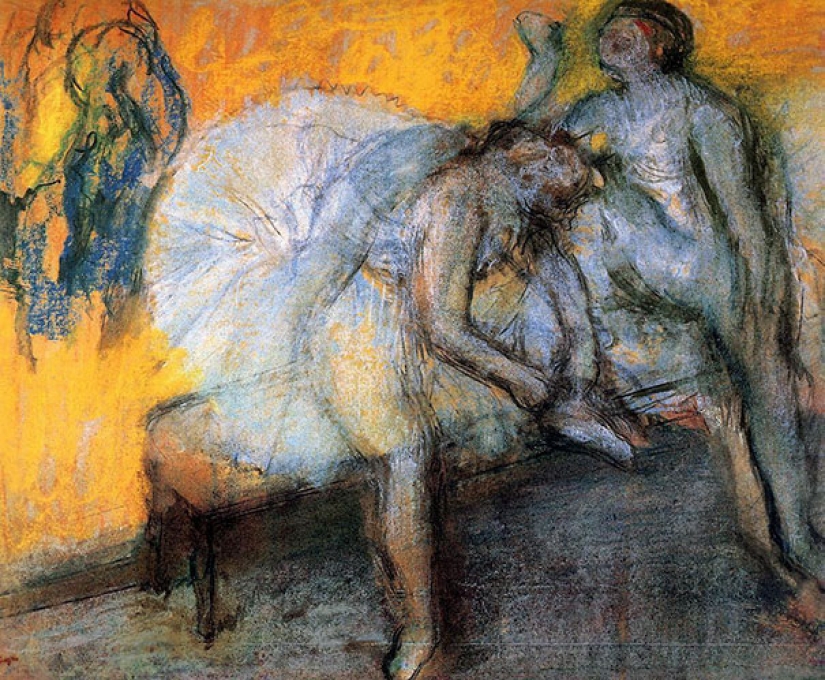
Edgar Degas — "Two dancers in yellow and pink" (1910)
Edgar Degas was a French artist known for his paintings, sculptures, drawings and engravings. He is often associated with the theme of dance: most of his works depict dancers in one form or another. It is believed that "Two dancers in yellow and pink" is his last pastel painting, which he created when he almost lost his sight. Degas's eyesight deteriorated from the age of 36, and by the age of 40 he lost his central vision due to retinal degeneration. The artist died in 1917 at the age of 83.

Hieronymus Bosch - "Christ Bearing the Cross" (1535)
Hieronymus Bosch (1450-1516) is well known for his depictions of hell and the afterlife, and his latest work is no exception. The painting titled "Christ Bearing the Cross" (1490) is a harsh accusation of human evil. Nineteen heads are tightly pressed against each other, the faces are bestial and terrible. Near Christ, only the good thief and Saint Veronica, whose passive facial expressions separate them from the surrounding characters, have preserved their human appearance.

Bartolome Esteban Murillo - "The Mystical Betrothal of Saint Catherine" (1682)
Bartolome Esteban Murillo is a Spanish Baroque painter. He was born in Seville in 1617 and died in April 1682. Murillo is best known for paintings based on biblical subjects, but he also painted a lot of women and children contemporary to him. His last work is The Mystical Betrothal of Saint Catherine (circa 1682), painted for the altar of the Church of Saint Catalina in Cadiz. Nevertheless, his biographers claim that in reality the painting was finished by the hand of another artist. Murillo fell from the scaffolding while working and died a few months later, presumably from his injuries, and therefore his students finished the painting.

Paul Cezanne - "The Gardener of Vallier" (1906)
Paul Cezanne (1839-1906) was a French post-impressionist painter. In the period from 1902 to 1906, he created several portraits of Vallier, a gardener in his studio Le Lov. The work, painted in 1906, which can be compared with Rembrandt's later portraits both in its gloomy mood and in its bright and crude technique of execution, is considered the artist's last painting.
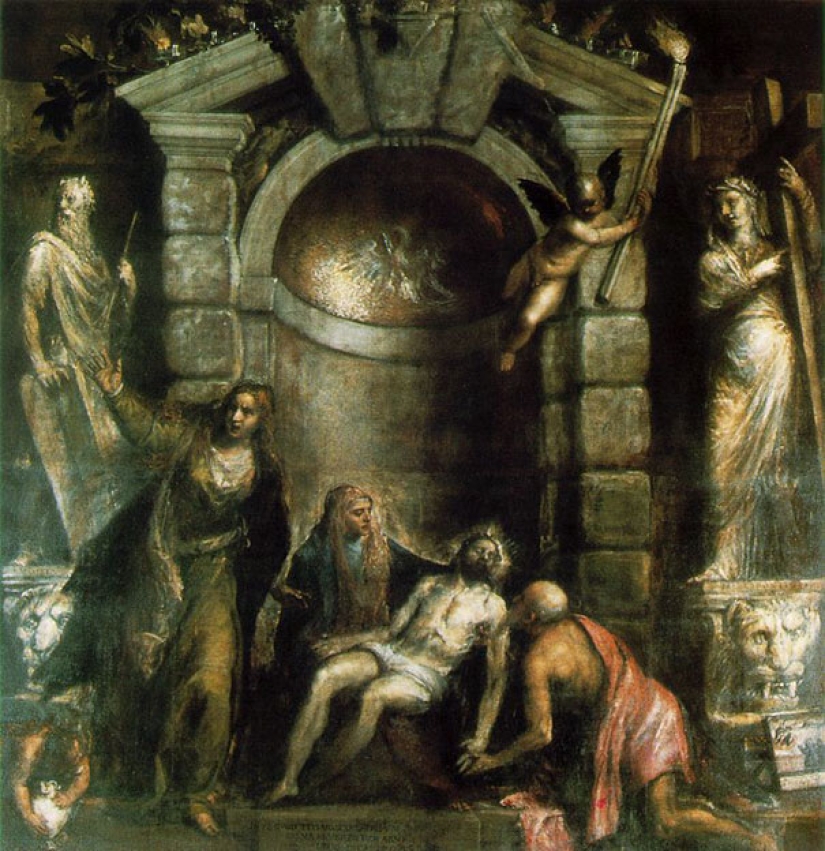
Titian - "Pieta" (1576)
Tiziano Vecelli, known as Titian— is an Italian painter born in 1490. He is considered one of the most versatile Italian artists, as he painted landscapes, portraits, mythological and biblical subjects. Titian died of fever during the plague epidemic in Venice in 1576. His latest painting "Pieta— is an expressive night scene of suffering.
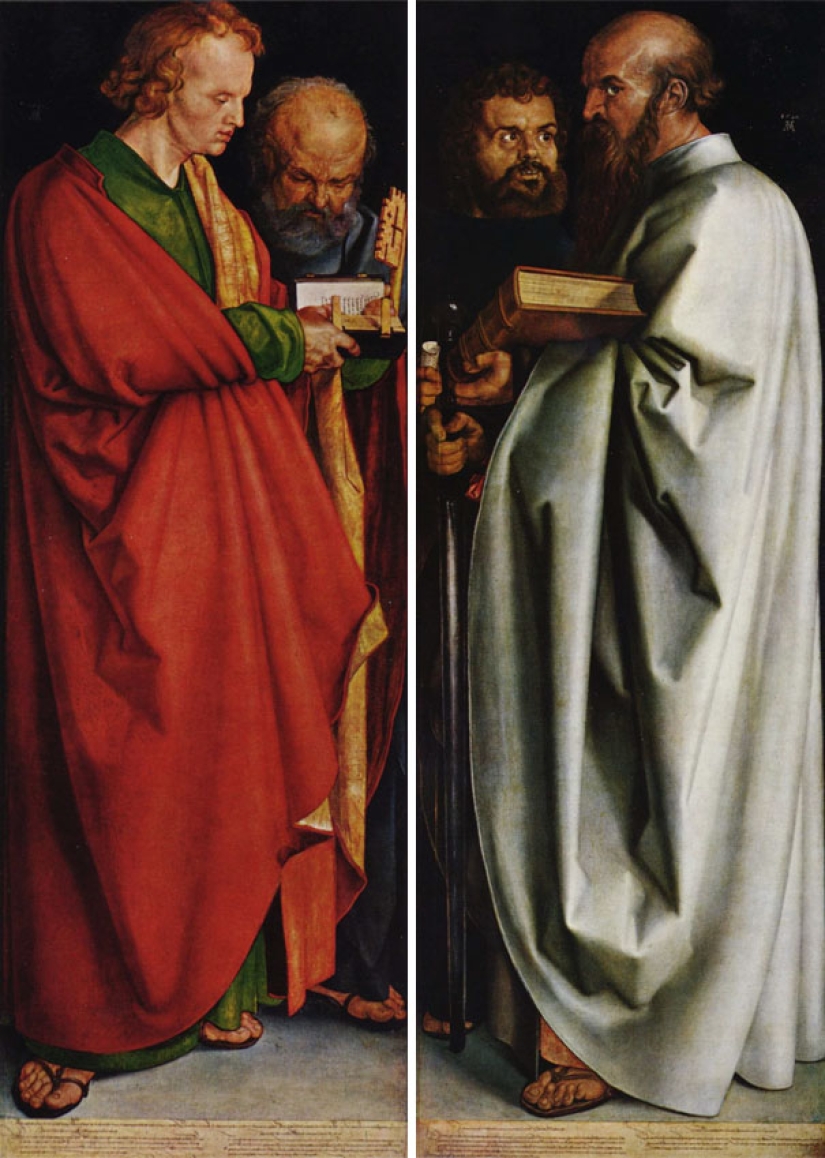
Albrecht Durer — "The Four Apostles" (1526)
Albrecht Durer is an artist and engraver of the German Renaissance, born in Nuremberg. Durer gained a reputation and influence throughout Europe when he was only in his twenties, thanks to woodcuts. One day he said: "When a person devotes himself to art, he will avoid many troubles if he does not do nothing." His latest work is the painting panel "The Four Apostles". In 1627 , the Elector of Bavaria Maximilian I acquired the painting . Since then, the painting has been in Munich, and despite the efforts of the Nuremberg authorities since 1806, the work has not been returned to the artist's hometown.
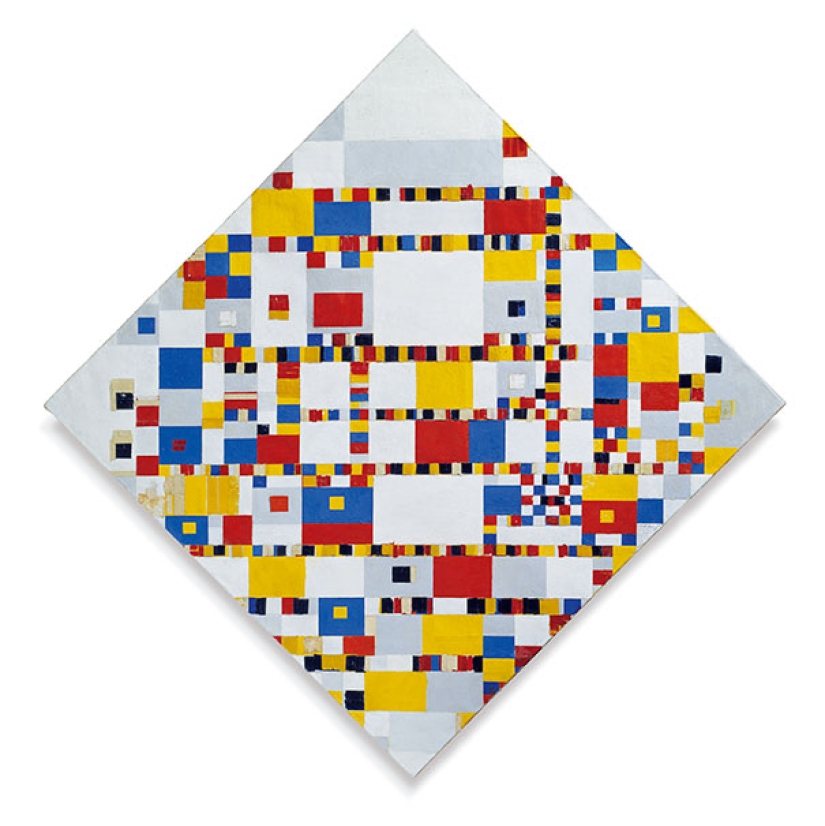
Pete Mondrian - "Boogie-Woogie Victory" (1944)
Peter Cornelis (pIet) Mondrian is a Dutch artist and representative of the abstract art direction "De Stijl" (neoplasticism), founded by Theo van Dusburg. Mondrian drew a base of vertical and horizontal black lines on a white background, after which he used three primary colors. The artist died of pneumonia in 1944. "Boogie-Woogie Victory" is his last, unfinished work. Since 1998, it has been part of the collection of the Municipal Museum of The Hague. The painting was bought for 80 million guilders (about 35 million euros) from the American collector Samuel Irving Newhouse.
Keywords: Death | Work | Culture | Painting | Paintings | Artists | The last
Post News ArticleRecent articles

In the fall of 1972, Bill Yates traveled through the countryside in the vicinity of Tampa, Florida. At that time, he was studying ...

Severe cold weather does not give up its positions. We offer you to admire the magical photos of winter Europe, because snow and ...
Related articles

These artists love cats, but also masterfully draw them, often complementing funny and life signatures. Meet! --> Russian ...

We all know that walking in extreme cold is dangerous, but few people know what happens to the human body at these moments.

This collection of photos will clearly please the little inner perfectionist who lives in each of us. It doesn't matter how much ...

Vladimir Lyubarov is an artist from the countryside who paints pictures of real life. But he brings amazing characters, birds, and ...